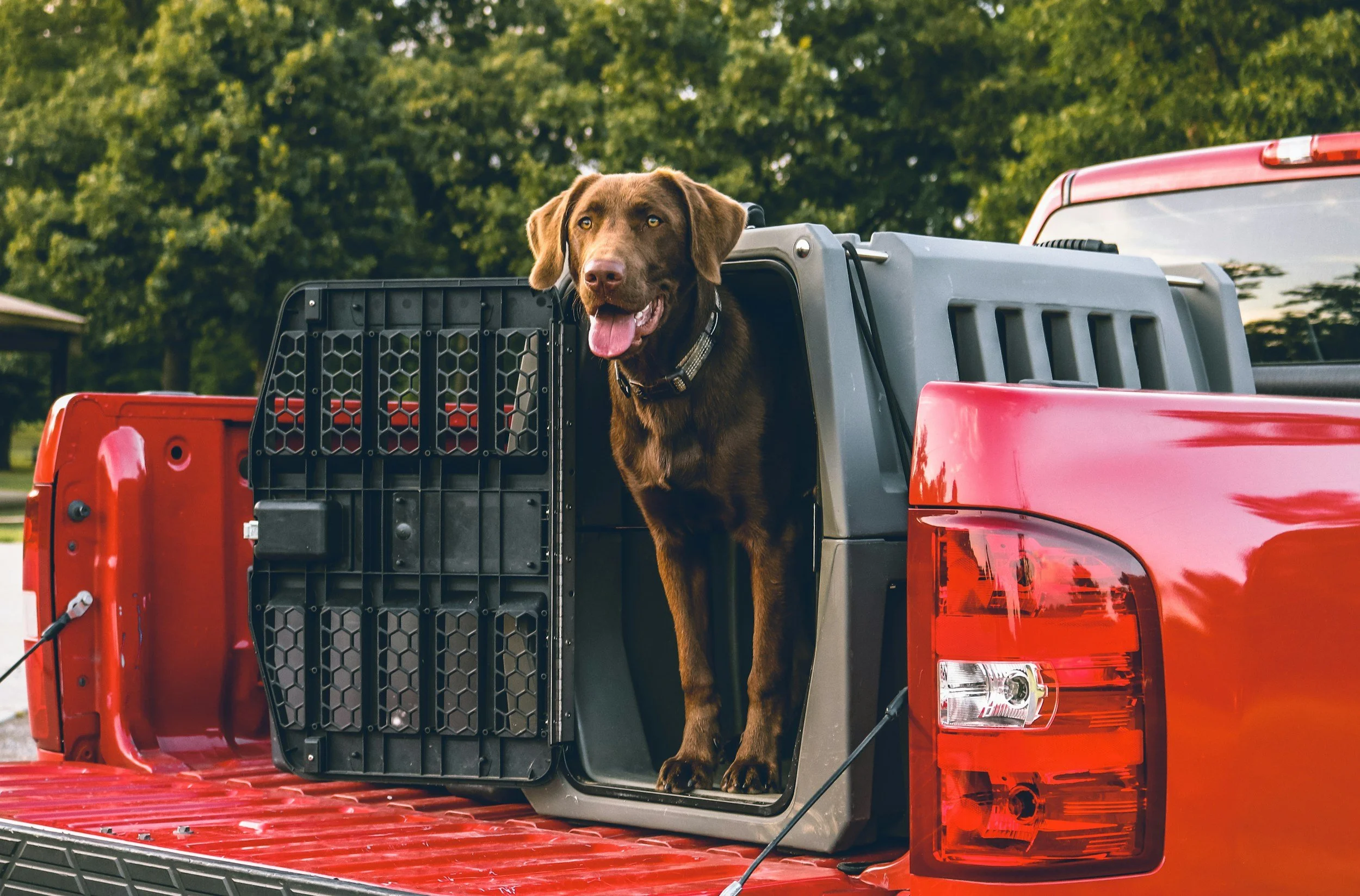Crate Training Done Right: Ensuring Safety and Comfort for Your Dog
Teaching your dog to view their crate as a safe and comfortable space—crucial for both everyday use and emergency situations.
Crate training is one of the most effective ways to provide structure, safety, and comfort for your dog. When done correctly, it becomes a tool that benefits both you and your pup, creating a positive space—not a punishment. It’s also essential for safe travel and can be a lifesaver in emergency situations, ensuring your dog is protected in times of crisis.
Why Crate Training is Essential
Crate training isn’t just about house training—it’s about providing your dog with a safe space. “A crate should never be seen as a cage or a form of punishment. It’s a den—a place where your dog feels secure and comfortable,” says Denise Bozenski, owner of Fetch This Canine.
Crates are also a critical safety measure for travel and emergencies. “Dogs should never be loose in a vehicle—just like people need seatbelts, dogs need proper restraints. A crash-tested crate is the safest option,” Denise explains.
Learn more about Denise HERE!
Crate Training Could Save Your Dog’s Life in an Emergency
No one likes to think about it, but natural disasters, evacuations, or medical emergencies can happen at any time. Many emergency shelters require dogs to be kenneled, and in stressful situations, a dog that’s comfortable in a crate will handle the situation much better. “If a dog is injured and needs to be on crate rest, or if you need to evacuate during a wildfire or hurricane, a dog that’s already crate-trained will experience far less stress,” Denise explains. “The last thing you want in an emergency is for your dog to panic because they’ve never been in a crate before.”
Choosing the Right Crate
Selecting the right crate is key to success:
- Size Matters: Your dog should be able to stand up, turn around, and lie down comfortably but not have excess space.
- Material Options: Wire crates are not recommended for travel, as they provide little protection in an accident. For home use, they work well for training but aren’t the safest option for every dog.
- Best Travel Crates: For car travel, crash-tested crates like Ruffland, Impact, or Gunner kennels provide the highest level of safety.
To learn more about creating a safe space for your dog, read our blog Creating a Safe and Comfortable Sleeping Area for Pets.
Step-by-Step Crate Training
Step 1: Make it Inviting
Set up the crate in a quiet area and make it cozy with a soft bed and favorite toys. Leave the door open and let your dog explore.
Step 2: Use Positive Associations
Encourage your dog to go inside by tossing treats or feeding meals in the crate. “Crate training should always be paired with positive reinforcement,” Denise explains.
Step 3: Start with Short Periods
Close the crate door for just a few minutes at first while staying nearby. Gradually increase the time as your dog gets more comfortable.
Step 4: Increase Alone Time
Once your dog is relaxed in the crate with you nearby, practice leaving the room for short intervals. Build up the duration slowly to prevent anxiety.
Step 5: Crate at Night, When Away, & For Travel
For bedtime or when you’re out, ensure the crate remains a positive space by avoiding excessive confinement. “A well-crate-trained dog sees their crate as a restful retreat, not a place of isolation,” Denise notes.
For car rides, always secure your dog in a proper travel crate. Unrestrained dogs can be seriously injured in an accident, and crash-tested crates provide the best protection.
Common Crate Training Mistakes to Avoid
- Using the Crate for Punishment – This creates fear and resistance.
- Leaving the Dog Inside for Too Long – Puppies need frequent potty breaks; adult dogs shouldn’t be crated for more than a few hours at a time.
- Not Gradually Introducing the Crate – Sudden confinement can lead to stress and barking.
- Using an Unsafe Crate for Travel – Wire crates or unsecured plastic crates can be dangerous in a crash.
Read more on stress and your dog on our blog, **How Stress Affects Pet Healt**h.
When to Seek Professional Help
If your dog shows extreme anxiety or fear toward the crate, professional training can help. Fetch This Canine specializes in balanced training techniques that make crate training a stress-free process for both you and your dog.
Struggling with crate training or need help finding the right setup for your dog? Contact Fetch This Canine for expert training and guidance. Get started HERE!
FAQs
How long does it take to crate train a dog?
Every dog is different, but most dogs adjust within a few days to a few weeks with consistent training and positive reinforcement.
Why is crate training important for emergencies?
In natural disasters, evacuations, or medical emergencies, many dogs must be kenneled. Crate-trained dogs experience far less stress and adjust more easily to unfamiliar environments.
What’s the best crate for car travel?
Crash-tested crates like Ruffland, Impact, or Gunner kennels are the safest options for car travel.


